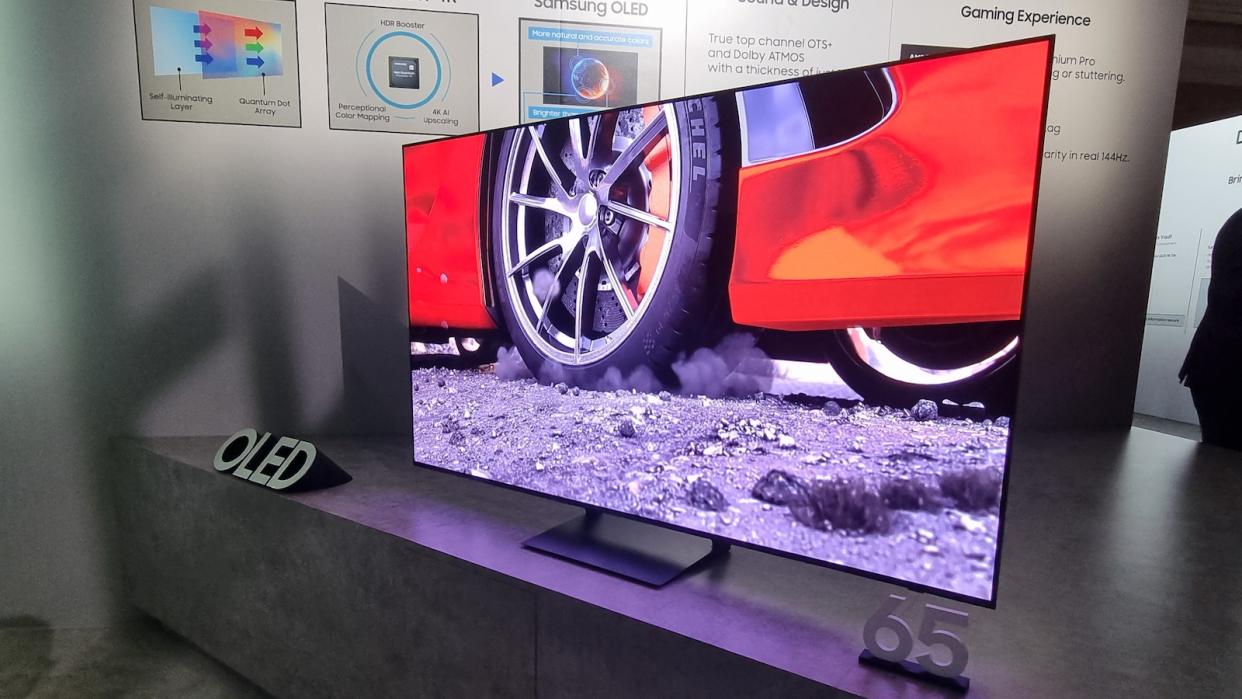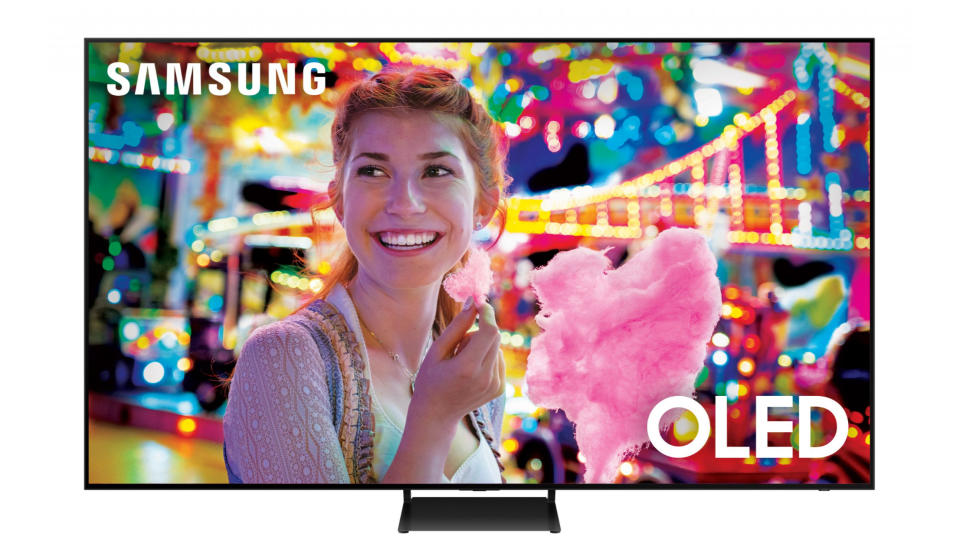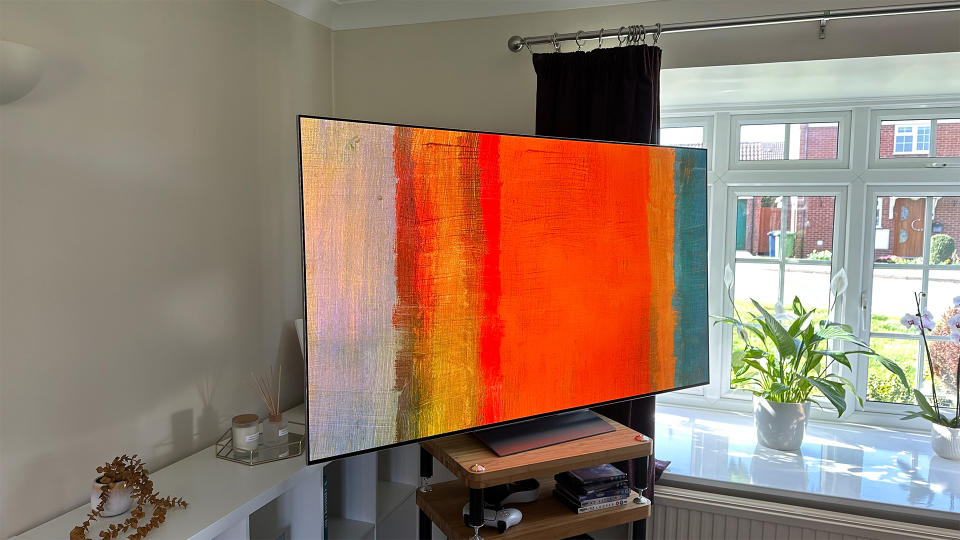Samsung’s first ‘W’ OLED TV has the same name as its QD-OLED, and that’s not alright

While Samsung undoubtedly has an impressive track record when it comes to the quality of its TVs, it also has form with deciding on ‘unhelpful’ names for some of its TV technologies – a habit that’s reared its head once again over the past year with the arrival of the company's new Quantum Dot OLED technology.
Given how good QD-OLED technology has the potential to be, with its pure RGB colours and brightness benefits, you’d have thought Samsung would have wanted to scream about it from every rooftop. Instead, though, upon launching its first S95B QD-OLED TVs in 2022, it decided to just describe them as plain old OLED TVs, inexplicably hiding the distinction between its new OLED-plus-Quantum-Dots tech and the so-called WRGB (or simply ‘W’) OLED approach rival TV brands had been using for years.
We wrote back then about our bafflement at this marketing decision, with our best guess being that Samsung thought it might be easier/better to capitalise on the long-established popularity of OLED TVs rather than trying to explain how its new QD-OLED approach was different. Recent surprise developments in Samsung’s 2023 TV range, though, have possibly belatedly given us another reason for Samsung’s odd decision to market QD-OLED as just OLED. Even though this new reason again seems certain to merely add to consumer confusion.
Taking the ‘QD’ out of ‘QD-OLED’

When Samsung first announced its new S90C TV range, while it still insisted on just referring officially to it as using OLED technology, it was known that the 55, 65 and new 77-inch screen sizes actually all used Samsung’s latest QD-OLED panels. There was some confusion (of course!) over exactly how the more affordable S90Cs were going to differ from the 2023 QD-OLED S95C flagships, but at least we knew what core technology the S90Cs were using.
But now Samsung has thrown a spanner in the works again by announcing with little fanfare that the S90C range is being expanded through the addition of an 83-inch model that, it turns out, isn’t actually made using Samsung’s QD-OLED technology. Instead, the new 83-inch S90C uses regular OLED technology.
That means it uses the very same W OLED technology manufactured by its arch-rival LG that Samsung has argued against for over a decade – and which QD-OLED was specifically developed to rival.
Different sizes, different performance
This sudden love for regular OLED technology doesn’t just pose some awkward questions for Samsung’s marketing teams as they reverse ferret on years of OLED abuse; it also makes things confusing for consumers. After all, despite every S90C model sporting the same range name, it is now the case that all four S90C TVs are very much not equal. The 83S90C’s regular OLED technology doesn’t enjoy the same RGB colour set-up that the other S90Cs do, and its brightness won’t be nearly as high as that of the other S90Cs.
We haven’t had the chance to test the 83S90C and so can’t say precisely how much duller it might be, but our experiences of other S90Cs and other regular OLED TVs suggest that the QD-OLED S90Cs will be between 20 and 25% brighter than the regular OLED 83-inch version. In other words, by the time its colour and brightness performance differences have been taken into account, the 83S90C is essentially a completely different TV to the other S90C models and can be expected to produce a completely different picture performance.
Yet it enjoys the same model designation, and it is sold under the same simple OLED name as its QD-OLED siblings. So unless a potential buyer is really paying attention to reviews or articles such as this one, they will likely have no idea of just how much of a performance difference they’re buying into if they decide to step up from the 77-inch S90C to the 83-inch.
Putting such a burden of research and knowledge onto consumers looking to spend thousands of pounds or dollars just doesn’t seem reasonable when Samsung could easily have simply released its 83-inch OLED with a slightly different model number to help make it clearer how different it is to all of Samsung’s other current OLED sets.
Causing confusion

To be fair to Samsung, it’s not alone in this sort of ‘different screen technologies in the same apparent range’ mess. We’ve been annoyed many times over the years, for instance, by the way many – actually most – brands use a mixture of VA and IPS panel types in their LCD ranges, despite these two panel types yielding entirely different levels of performance.
The most direct comparison, though, can be seen with rival LG’s current G3 range, where only the 55, 65 and 77-inch models use the brand’s new Micro Lens Array technology, while the 83-inch model does not. This means the 83-inch model will be as much as 40% less bright than the other screen sizes, yet there’s no way of knowing this just by looking at the range’s model numbers. Panasonic, similarly, will only be using MLA technology on the 55 and 65-inch models in its upcoming MZ2000 OLED range, with the 77-inch model using a regular WRGB OLED panel.
LG and Panasonic’s latest potentially confusing premium OLED ranges, though, do still at least use WRGB panel technology at their heart; the MLA technology refers merely to the application of light-focusing lenses just behind the screen. They don’t use completely different core OLED technologies in the way the Samsung S90Cs do.
Samsung’s decisions – to fail to distinguish between QD-OLED and normal OLED in its naming conventions, and then to add a normal OLED to an otherwise QD-OLED range – make it seem that it isn’t regarding or marketing QD-OLED as new or ‘special’ in any way. All while seemingly wilfully confusing consumers in the process. But hey – what do we know?
MORE:
Want a true QD-OLED? Here's our Samsung S95C review
These are the best TVs you can buy right now
And here are the latest and greatest TV deals

